Bathtub
How Much Does It Cost to Replace a Bathtub

As someone who loves a relaxing soak in the tub, I know firsthand the importance of a well-maintained bathtub.
But what happens when your bathtub is beyond repair? That’s when the question arises: How much does it cost to replace a bathtub?
In this article, I’ll break down the average cost of bathtub replacement, factors that can affect the cost, and whether it’s worth it to hire a professional or tackle the job yourself.
Let’s dive in and find out!
Key Takeaways
- The average cost of replacing a bathtub is around $3,000.
- Material options for bathtub replacement include acrylic, fiberglass, porcelain-enameled steel, and cast iron.
- Factors that affect the cost of bathtub replacement include the size and type of bathtub chosen, the materials used, the complexity of the installation process, and whether a professional contractor is hired.
- DIY options for bathtub replacement can save on costs, but there is a risk of costly mistakes. Hiring a professional ensures correct and safe installation, but it comes at a higher cost.
Average Cost of Bathtub Replacement
The average cost of replacing a bathtub is around $3,000.
When it comes to bathtub replacements, there are various material options available. These options include acrylic, fiberglass, porcelain-enameled steel, and cast iron.
Acrylic is a popular choice due to its durability, ease of maintenance, and affordability. Fiberglass is another cost-effective option that is lightweight and easy to install. Porcelain-enameled steel offers a classic look and is known for its durability. However, it can be prone to chipping and scratching. Cast iron is a more expensive option but is extremely durable and offers a luxurious feel.
Along with material costs, labor costs also need to be considered. On average, labor costs for bathtub replacement can range from $500 to $1,000, depending on factors such as the complexity of the installation and the location of the bathroom.
Factors Affecting Bathtub Replacement Costs
When it comes to replacing your bathtub, you’ll want to consider a few factors that can affect the overall cost.
First and foremost, the size and type of bathtub you choose will play a significant role in determining the cost. Larger or more luxurious bathtubs will generally be more expensive than smaller or standard ones.
Additionally, the materials used for the bathtub, such as acrylic, fiberglass, or cast iron, can also impact the cost.
Other factors to consider include the complexity of the installation process, any necessary plumbing changes, and the cost of hiring a professional contractor.
To save on costs, you can consider doing some of the work yourself, such as removing the old bathtub or painting the walls. However, it’s important to weigh the potential savings against the risk of making costly mistakes.
Speaking of cost-saving tips, let’s now delve into the details of the cost of DIY bathtub replacement.
Cost of DIY Bathtub Replacement
If you want to save money, you can consider tackling the DIY bathtub replacement yourself. It is a cost-effective option that allows you to customize the process according to your preferences.
Here are some important factors to consider when estimating the cost of DIY bathtub replacement:
-
Bathtub replacement materials: You will need to purchase a new bathtub, which can range in price depending on the material. Options include acrylic, fiberglass, cast iron, and porcelain. Prices can vary from a few hundred dollars to several thousand.
-
Cost of bathtub removal: Removing the old bathtub may require tools such as a reciprocating saw, pry bar, and a hammer. Additionally, you may need to rent a dumpster for disposal, which can add to the overall cost.
-
Plumbing and electrical work: If you are changing the location of the bathtub or upgrading fixtures, you may need to hire a professional to handle the plumbing and electrical aspects.
-
Additional expenses: Consider the cost of any necessary permits, as well as any unexpected repairs that may arise during the process.
Cost of Hiring a Professional for Bathtub Replacement
Hiring a professional for bathtub replacement can be a convenient option, as they will handle all the necessary plumbing and electrical work. Not only does this save you time and effort, but it also ensures that the job is done correctly and safely. When considering the cost of hiring a professional, it is important to understand the breakdown of expenses. The table below provides a breakdown of the average costs associated with bathtub replacement:
| Cost Component | Average Cost |
|---|---|
| Bathtub | $500-$1,500 |
| Labor | $500-$1,000 |
| Plumbing and Electrical Work | $500-$1,000 |
| Total Cost | $1,500-$3,500 |
To find affordable bathtub replacement services, it is recommended to compare quotes from different professionals or companies. Additionally, consider looking for any ongoing promotions or discounts that may be available. It is important to prioritize quality and expertise when selecting a professional, as the long-term durability and functionality of your new bathtub depend on it.
Additional Costs to Consider for Bathtub Replacement
When it comes to bathtub replacement, there are a few additional costs that homeowners should be aware of.
One such cost is the plumbing and installation fees, which can vary depending on the complexity of the project and the location of the bathroom. These fees cover the cost of removing the old bathtub, installing the new one, and connecting the plumbing fixtures.
Another expense to consider is upgrading fixtures and accessories, such as faucets, showerheads, and towel bars. These upgrades can enhance the overall look and functionality of the bathroom, but they do come at an additional cost.
Plumbing and Installation Fees
The cost of replacing a bathtub includes plumbing and installation fees. When it comes to plumbing, there are a few factors that can affect the cost.
First, you may need to hire a plumber to disconnect and reconnect the water supply lines and drain pipes. This can range from $150 to $300 depending on the complexity of the job.
Second, if your new bathtub requires electrical connections for features like jets or lighting, you may need an electrician to handle the wiring. Electrical fees can range from $100 to $500 or more, depending on the extent of the work required.
Lastly, there may be hidden costs such as repairing any damage to the surrounding walls or floor, which can add to the overall expense.
With these considerations in mind, it’s important to budget for both plumbing and electrical fees when replacing a bathtub.
Now, let’s move on to the next section about upgrading fixtures and accessories.
Upgrading Fixtures and Accessories
After considering the plumbing and installation fees for replacing a bathtub, it’s important to think about the aesthetic aspects of the upgrade.
Upgrading bathroom fixtures can greatly enhance the overall look and feel of your bathroom. When choosing the right bathtub accessories, you’ll want to consider the style, functionality, and durability.
Think about whether you prefer a traditional or modern design, and whether you need features like handrails or grab bars for accessibility. Additionally, selecting high-quality materials such as stainless steel or chrome can ensure longevity and resistance to water damage.
Upgrading fixtures and accessories can add a personal touch and elevate the overall ambiance of your bathroom.
Now, let’s move on to the next section and delve into the cost comparison between bathtub replacement and refinishing.
Cost Comparison: Bathtub Replacement Vs. Refinishing
Replacing a bathtub can be more expensive than refinishing it. Not only does bathtub replacement require purchasing a new tub, but it also involves the cost of labor for demolition and installation. On the other hand, refinishing can give your existing bathtub a fresh, new look without breaking the bank. Here are some benefits of bathtub refinishing:
- Cost-effective: Refinishing is significantly cheaper than replacing a bathtub.
- Time-saving: Refinishing can be completed in just a few hours, while replacing a bathtub can take days.
- Eco-friendly: Refinishing eliminates the need to dispose of an old tub, reducing waste.
- Customizable: With refinishing, you have the option to choose a new color or finish for your bathtub.
The bathtub refinishing process involves thoroughly cleaning the tub, repairing any chips or cracks, applying a primer, and then spraying on a new coating. This process can extend the life of your bathtub and give it a fresh, updated appearance.
Tips for Saving Money on Bathtub Replacement
When it comes to replacing a bathtub, there are several key points to consider in order to save money.
Firstly, exploring budget-friendly alternatives to traditional bathtubs can significantly reduce costs without compromising on quality.
Additionally, deciding between a DIY installation or hiring a professional can have a significant impact on the overall expenses.
Lastly, negotiating with contractors to get the best price possible is a skill that can help homeowners stay within their budget.
Budget-Friendly Bathtub Alternatives
If you’re on a budget, there are cost-effective alternatives to replacing a bathtub. One option is bathtub remodeling, which involves changing the appearance of your existing bathtub without the need for a full replacement.
This can be done through bathtub resurfacing, where a new layer of material is applied to the existing surface to give it a fresh and updated look. Another alternative is bathtub liners, which are custom-made acrylic liners that fit over your existing bathtub, providing a new and durable surface.
Additionally, you can consider bathtub refinishing, which involves repairing any chips or cracks in your bathtub and then applying a new finish to restore its original shine. These alternatives can save you money while still giving your bathtub a new lease on life.
Now, let’s explore the options of DIY versus professional installation.
DIY Vs Professional Installation
One option to consider is whether you want to tackle the project yourself or hire a professional for bathtub installation. There are pros and cons to both approaches.
| DIY Installation | Professional Installation |
|---|---|
| Cost-effective | Expertise and experience |
| Flexibility in schedule | Efficient and timely |
| Sense of accomplishment | Higher quality work |
| Potential for mistakes | Added expense |
DIY installation can save you money, as you won’t have to pay for professional expertise. It also allows you to work at your own pace and gives you a sense of accomplishment. However, there is a risk of making mistakes, which can be costly to fix.
Hiring a professional ensures that the job will be done efficiently and with high quality. They have the necessary expertise and experience to handle any challenges that may arise. However, this option can be more expensive and may require you to work around their schedule.
Considering these factors, it’s important to weigh the pros and cons before making a decision. Ultimately, it depends on your level of confidence and willingness to take on the project yourself.
Now that you’ve decided whether to go DIY or hire a professional, the next step is to negotiate contractor prices.
Negotiating Contractor Prices
To get the best deal, you should research and compare different contractor prices before making a decision. Negotiating contractor prices can help you save money and ensure you are getting the most cost-effective alternatives for your bathtub replacement.
Here are some tips to keep in mind:
- Ask for multiple quotes from different contractors to compare prices.
- Don’t be afraid to negotiate and ask for discounts or lower rates.
- Consider the reputation and experience of the contractor before finalizing the deal.
- Look for contractors who offer package deals or discounts for multiple services.
By negotiating contractor prices, you can find a balance between quality and affordability for your bathtub replacement project. This will help you make an informed decision and budget effectively for the project.
Now, let’s move on to the next section about budgeting for bathtub replacement: what to expect.
Budgeting for Bathtub Replacement: What to Expect
When budgeting for bathtub replacement, you should expect to factor in the cost of both the new tub and the installation fees. There are several bathtub replacement alternatives available, ranging from basic acrylic tubs to luxurious freestanding tubs. The cost breakdown of bathtub replacement can vary depending on factors such as the type of tub, the size of the bathroom, and any additional features or upgrades. To give you an idea of the potential costs involved, here is a breakdown of the average prices for different types of bathtubs and their installation fees:
| Bathtub Type | Average Cost | Installation Fee |
|---|---|---|
| Acrylic | $500 – $1,500 | $500 – $1,000 |
| Fiberglass | $700 – $2,000 | $800 – $1,200 |
| Cast Iron | $1,200 – $5,000 | $1,000 – $2,500 |
| Freestanding | $2,000 – $10,000 | $1,500 – $3,000 |
Remember that these prices are just estimates and can vary depending on your specific circumstances. It’s always a good idea to get multiple quotes from contractors to ensure you’re getting the best price for your bathtub replacement project.
Frequently Asked Questions
Can I Replace My Bathtub Myself if I Have No Prior Experience With Plumbing or Construction?
I can replace my bathtub myself even without prior experience in plumbing or construction. It’s possible with the help of a bathtub replacement tutorial and some tips for first-time bathtub replacement.
What Are the Potential Risks or Drawbacks of DIY Bathtub Replacement?
There are several risks involved and drawbacks to consider when attempting a DIY bathtub replacement. These include potential water damage, improper installation leading to leaks, and the need for specialized tools and knowledge.
Are There Any Hidden Costs or Unexpected Expenses That I Should Be Aware of When Replacing a Bathtub?
When it comes to replacing a bathtub, there can be hidden costs and unexpected expenses. It’s important to be aware of these potential surprises so you can budget accordingly and avoid any financial setbacks.
Are There Any Special Permits or Licenses Required for Hiring a Professional to Replace a Bathtub?
Permit requirements and licensing regulations vary by location when hiring a professional to replace a bathtub. It is important to check with local authorities to ensure compliance with any necessary permits or licenses.
How Long Does the Average Bathtub Replacement Process Take From Start to Finish?
On average, a bathtub replacement process takes around 2-3 days. The steps involved include removing the old bathtub, preparing the area, installing the new bathtub, and making any necessary adjustments or repairs.
Conclusion
After carefully considering all the factors involved, I’ve come to the conclusion that the cost of replacing a bathtub can vary greatly depending on various factors such as materials, labor, and additional features.
However, this investment is not just about the monetary value, but also about the symbol of renewal and rejuvenation it represents. By replacing your bathtub, you’re not only enhancing the aesthetic appeal of your bathroom, but also creating a space for relaxation and self-care.
It’s a worthwhile expense that can bring a sense of luxury and comfort to your daily routine.
Liam’s journey with us started as a consumer. Having faced challenges while setting up his own modern bathroom, he delved deep into research.
Recognizing his knack for simplifying complex information and his authentic writing style, we were thrilled to welcome him aboard. Liam’s articles often merge practicality with style, ensuring readers find the perfect fit for their homes. Liam is an avid hiker off-duty and often jokes about finding the best “natural toilets” Mother Earth has to offer.
Bathtub
Can You Manually Add Water to a Toilet Tank

Have you ever experienced the frustration of having a low water level in your toilet tank? We sympathize with the irritation and inconvenience it may bring.
But fear not, for we have the solution! In this article, we will show you how to manually add water to your toilet tank, ensuring a proper water level.
Follow our step-by-step instructions and maintain mastery over your plumbing system.
Let’s dive in and take control of the situation!
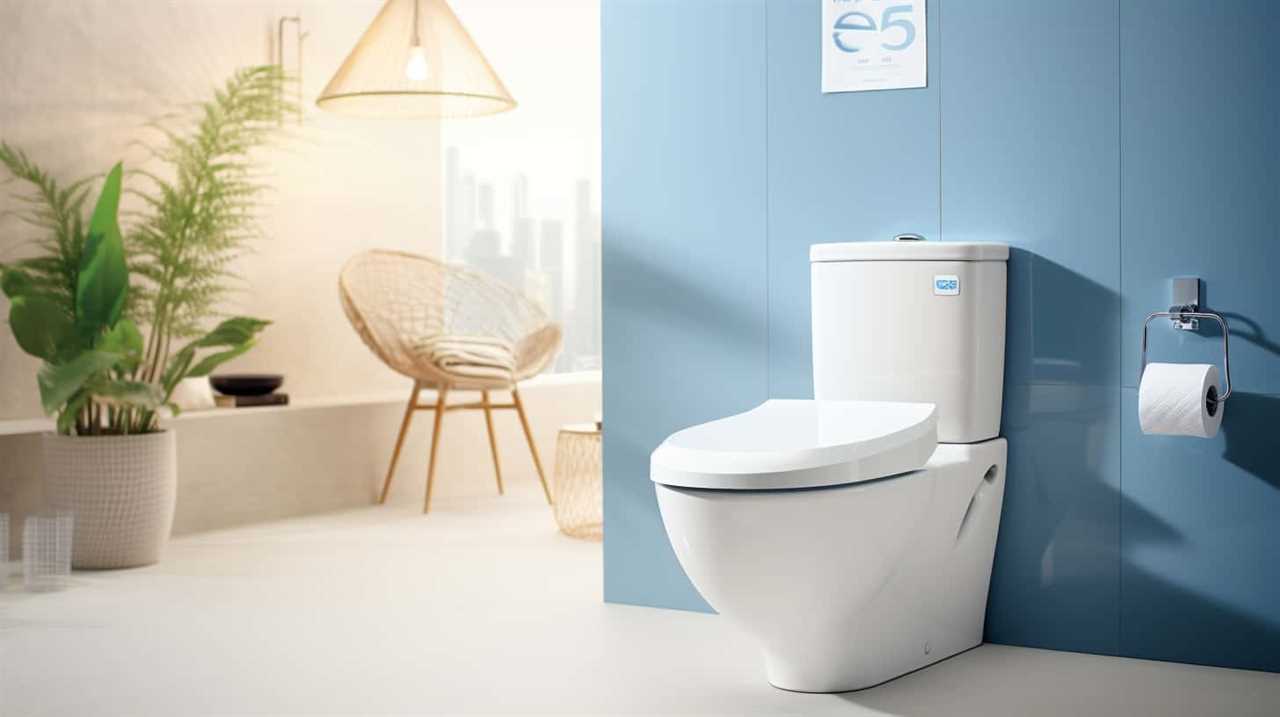
Key Takeaways
- Low water level in a toilet tank can lead to clogs and unpleasant odors.
- Adding water manually to the tank can help maintain the proper water level.
- Regularly checking for leaks, damage, and adjusting the fill valve can prevent low water levels.
- Troubleshooting common issues like tank leaks and faulty parts can help resolve water level problems.
Reasons for Low Water Level
One of the most common reasons for a low water level in our toilet tank is a faulty fill valve. A faulty fill valve prevents the tank from filling up to its proper level, which can lead to various issues such as toilet clogs.
It’s important to maintain the proper water level in the toilet tank as it ensures the effective flushing of waste and prevents clogs from occurring. When the water level is too low, it may not provide enough force to push the waste through the drain, resulting in a clog. Additionally, a low water level can also cause incomplete flushing, leaving behind residue and causing unpleasant odors.
To address this issue, we’ll need certain tools and materials.
Tools and Materials Needed
To manually add water to a toilet tank, we’ll need a few essential tools and materials. Here is a list of what you’ll need:
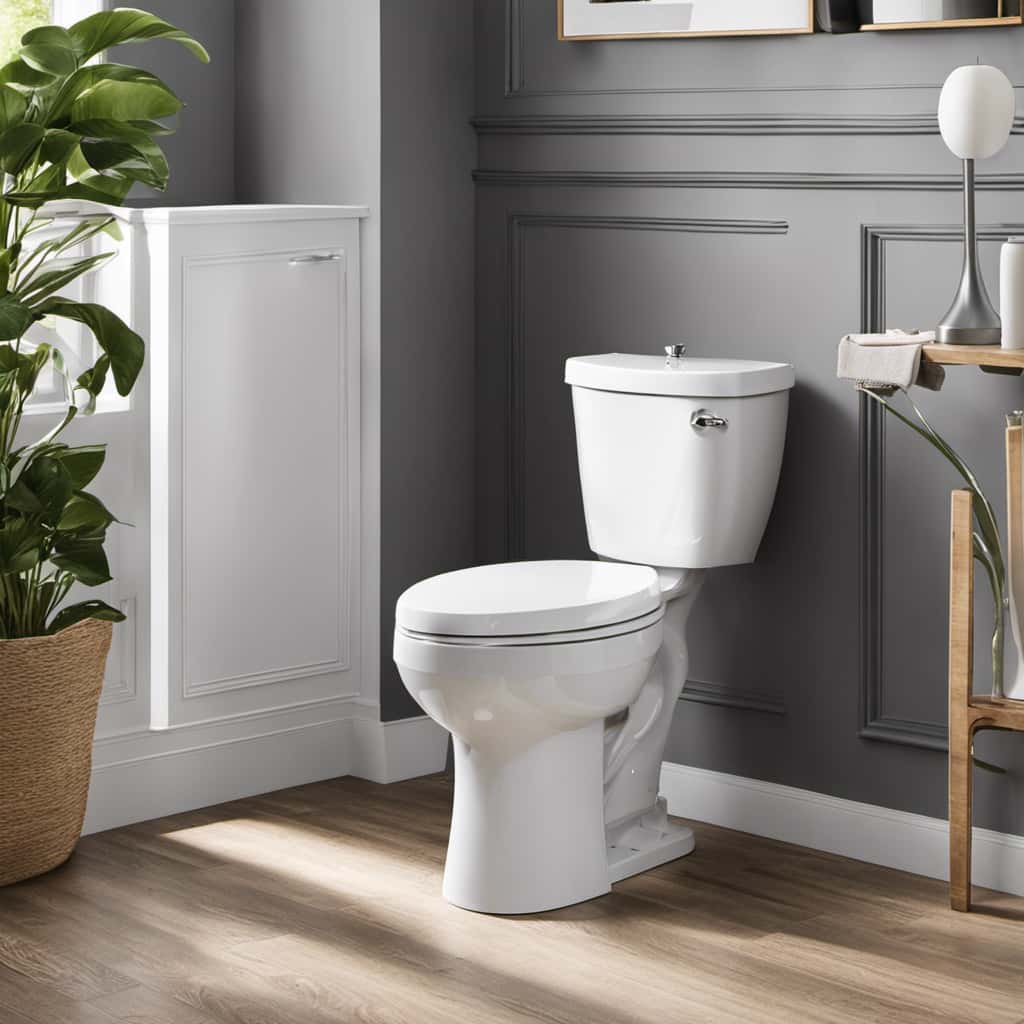
- Adjustable wrench: This tool is necessary for loosening and tightening the water supply line nut that connects the toilet tank to the water source.
- Bucket or container: You’ll need a container to hold the water that you’ll be adding to the toilet tank. A bucket or any other suitable container will work.
- Water: Fill the container with clean water to add to the toilet tank. Ensure that the water is free from contaminants to maintain the cleanliness of the tank.
- Towel or rag: It’s always a good idea to have a towel or rag handy to wipe up any spills or leaks that may occur during the process.
Step-by-Step Instructions
Now, let’s dive into the step-by-step instructions for manually adding water to a toilet tank.
Toilet tank maintenance is essential for the proper functioning of your bathroom fixture, especially if you have water-saving devices installed.
To manually add water to your toilet tank, follow these instructions carefully:
- Locate the water shut-off valve behind the toilet and turn it clockwise to shut off the water supply.
- Lift the toilet tank lid and place it aside in a safe spot.
- Inspect the tank for any visible leaks or damage.
- Locate the fill valve, which is connected to the water supply line, and locate the float. The float is a small plastic or metal device that controls the water level.
- Gently lift the float to the highest position, and hold it there.
- Slowly turn on the water shut-off valve counterclockwise to allow water to enter the tank.
- Keep an eye on the water level and release the float when the tank is filled to the desired level.
- Once the tank is filled, carefully place the tank lid back on and ensure it’s secure.
Following these step-by-step instructions will help you manually add water to your toilet tank effectively. Regular toilet tank maintenance is crucial to ensure the optimal performance of your water-saving devices.
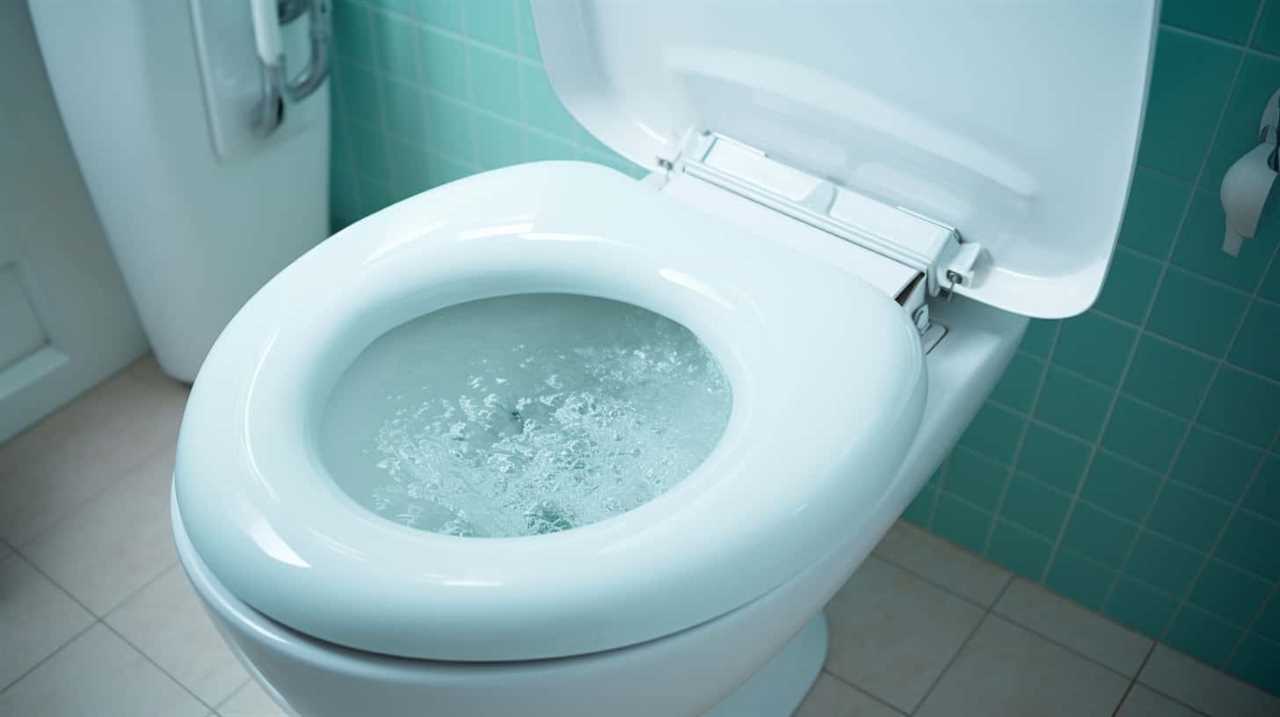
Tips for Maintaining Proper Water Level
To maintain the proper water level in your toilet tank, we recommend regularly checking for any leaks or damage and adjusting the fill valve as needed. Here are some tips for maintaining the proper water level:
- Importance of regular toilet maintenance: Regularly checking for leaks or damage can prevent water wastage and potential water damage to your bathroom.
- Benefits of using a water-saving toilet flush system: Upgrading to a water-saving toilet flush system can help reduce water consumption, saving you money on your water bills and contributing to environmental conservation.
- Adjust the fill valve: If you notice that the water level in your toilet tank is too low or too high, adjust the fill valve accordingly. This will ensure that the toilet flushes properly and efficiently.
- Check for leaks: Periodically check for any leaks in the toilet tank or the water supply line. Leaks can cause the water level to drop, leading to a less effective flush and potential water damage.
Troubleshooting Common Issues
When troubleshooting common issues with a toilet tank, we often encounter problems that can be easily resolved with basic maintenance.
Two common issues that can occur are toilet tank leaks and toilet tank float adjustment. Toilet tank leaks can lead to a constant water flow, resulting in wasted water and higher water bills. To fix this issue, it’s important to check the tank for any cracks or damage and replace any faulty parts, such as the flapper or fill valve.
Another common issue is an incorrect toilet tank float adjustment, which can cause the toilet to constantly run or not flush properly. Adjusting the toilet tank float to the correct water level can resolve this issue. It’s important to ensure that the float is properly positioned and not obstructed by any debris or other objects.
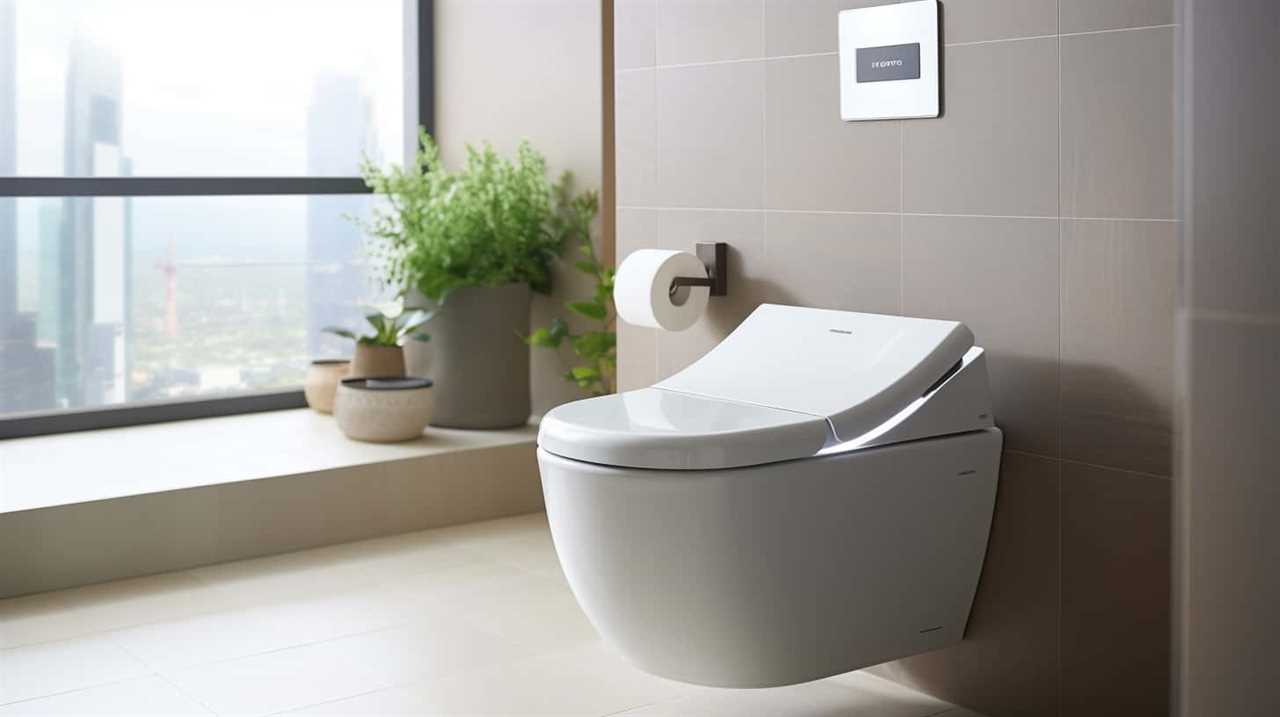
Frequently Asked Questions
Can I Use Any Type of Water to Manually Add to the Toilet Tank?
Yes, we can manually add water to a toilet tank. However, it is important to use clean, potable water to maintain water quality and prevent any potential damage to the tank or plumbing system.
How Often Do I Need to Manually Add Water to the Toilet Tank?
We should regularly check the water level in the toilet tank to ensure proper functioning. Using a measuring cup, we can manually add water as needed, maintaining the optimal level for flushing efficiency.
Is It Safe to Manually Add Water to the Toilet Tank While the Toilet Is in Use?
Yes, we can manually add water to a toilet tank for maintenance and troubleshooting of the water level. However, it is important to ensure the toilet is not in use to prevent any accidents.
Will Manually Adding Water to the Toilet Tank Fix Other Toilet-Related Issues?
Manually adding water to a toilet tank may temporarily fix some toilet-related issues, but it won’t address potential causes that require professional assistance. Troubleshooting and fixing common problems without water addition should be our first approach.
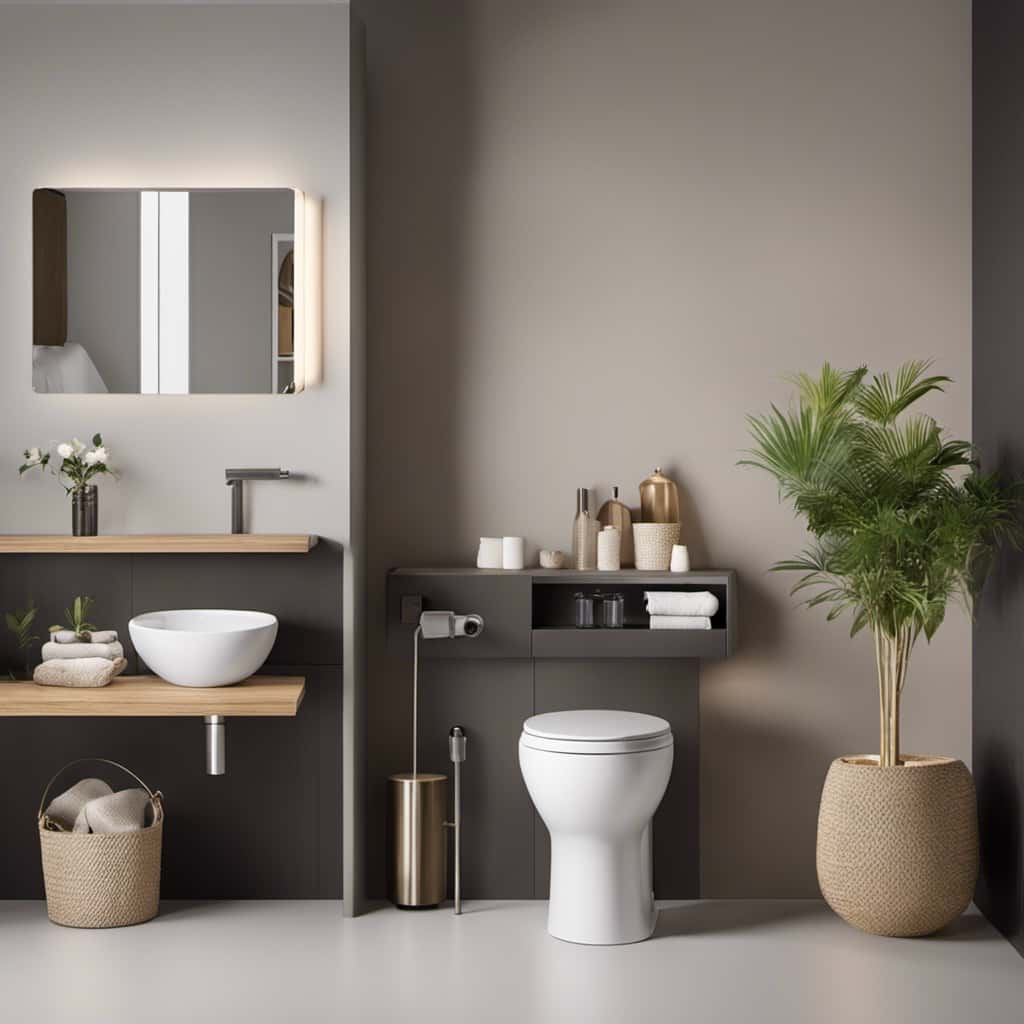
Can I Manually Add Water to the Toilet Tank if My Toilet Is Constantly Running?
Yes, you can manually add water to a toilet tank if it is constantly running. This can help maintain the water level and potentially fix the issue. It is important to identify and address the common causes of a constantly running toilet, as fixing it can save water and prevent damage.
Conclusion
In conclusion, manually adding water to a toilet tank is a simple and straightforward process. By following the step-by-step instructions and using the necessary tools and materials, you can easily maintain a proper water level in your toilet.
Remember to regularly check and adjust the water level to prevent any issues. Just like a well-tuned machine, a well-maintained toilet ensures smooth and efficient operation.
With an impeccable eye for detail and a passion for bathroom-related, Ava leads our editorial team gracefully and precisely.
Under her guidance, Best Modern Toilet has flourished as the go-to resource for modern bathroom enthusiasts. In her free time, you might find Ava exploring antique shops and looking for vintage bathroom fixtures to add to her collection.
Bathtub
Can You Flush Toilet Paper in Puerto Del Carmen

Did you know that more than 80% of tourists in Puerto Del Carmen are curious about whether they can flush toilet paper? Don’t worry, we’re here to reassure you.
In this article, we’ll explore the plumbing infrastructure of Puerto Del Carmen and discuss the benefits of flushing toilet paper.
We’ll also provide tips for proper disposal of other bathroom waste and considerations for travelers with sensitive plumbing systems.
So, let’s dive in and discover everything you need to know about flushing toilet paper in Puerto Del Carmen.
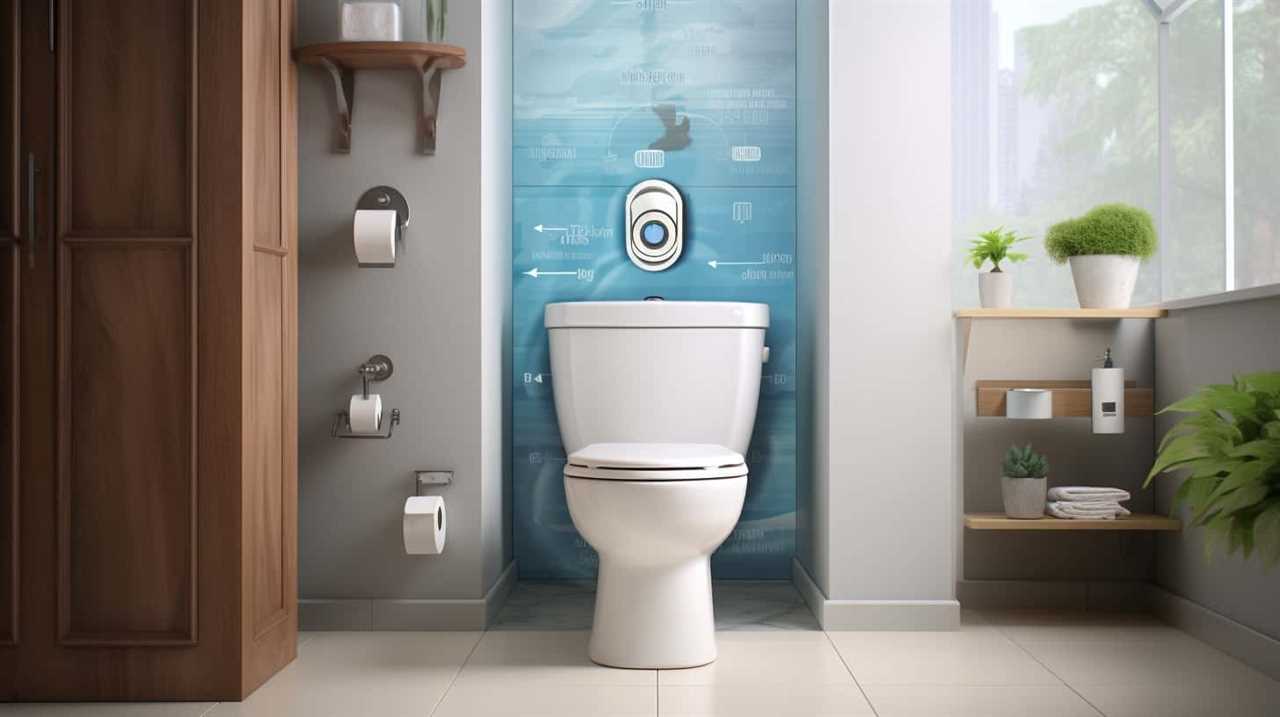
Key Takeaways
- Flushing toilet paper is generally allowed in Puerto Del Carmen.
- The plumbing system is designed to handle toilet paper disposal and is well-maintained.
- Flushing toilet paper saves time and effort compared to separate disposal methods.
- Proper disposal of other bathroom waste such as baby wipes and sanitary napkins is essential to prevent clogs and protect the environment.
Plumbing Infrastructure in Puerto Del Carmen
When it comes to the plumbing infrastructure in Puerto Del Carmen, we’ve found that flushing toilet paper is generally allowed. The water quality in Puerto Del Carmen is exceptional, and the plumbing system is designed to handle the disposal of toilet paper without any issues. The pipes and sewer system are well-maintained, ensuring smooth and efficient waste disposal.
This not only guarantees a hygienic and comfortable experience for residents and visitors but also has a positive environmental impact. By allowing the flushing of toilet paper, Puerto Del Carmen minimizes the need for additional waste management measures and reduces the amount of waste that ends up in landfills.
This responsible approach not only preserves the pristine beauty of the area but also helps to maintain the delicate balance of the ecosystem.
Benefits of Flushing Toilet Paper
Flushing toilet paper in Puerto Del Carmen offers numerous benefits for both residents and the environment. Not only does it contribute to the convenience and hygiene of daily life, but it also has a positive environmental impact. By flushing toilet paper, residents can avoid the hassle of disposing of it in a separate trash bin, saving time and effort. Additionally, it helps maintain a cleaner and more pleasant bathroom environment, reducing the risk of odors and bacteria. From an environmental standpoint, flushing toilet paper eliminates the need for additional waste management processes, reducing the overall carbon footprint. Here is a table summarizing the benefits of flushing toilet paper in Puerto Del Carmen:
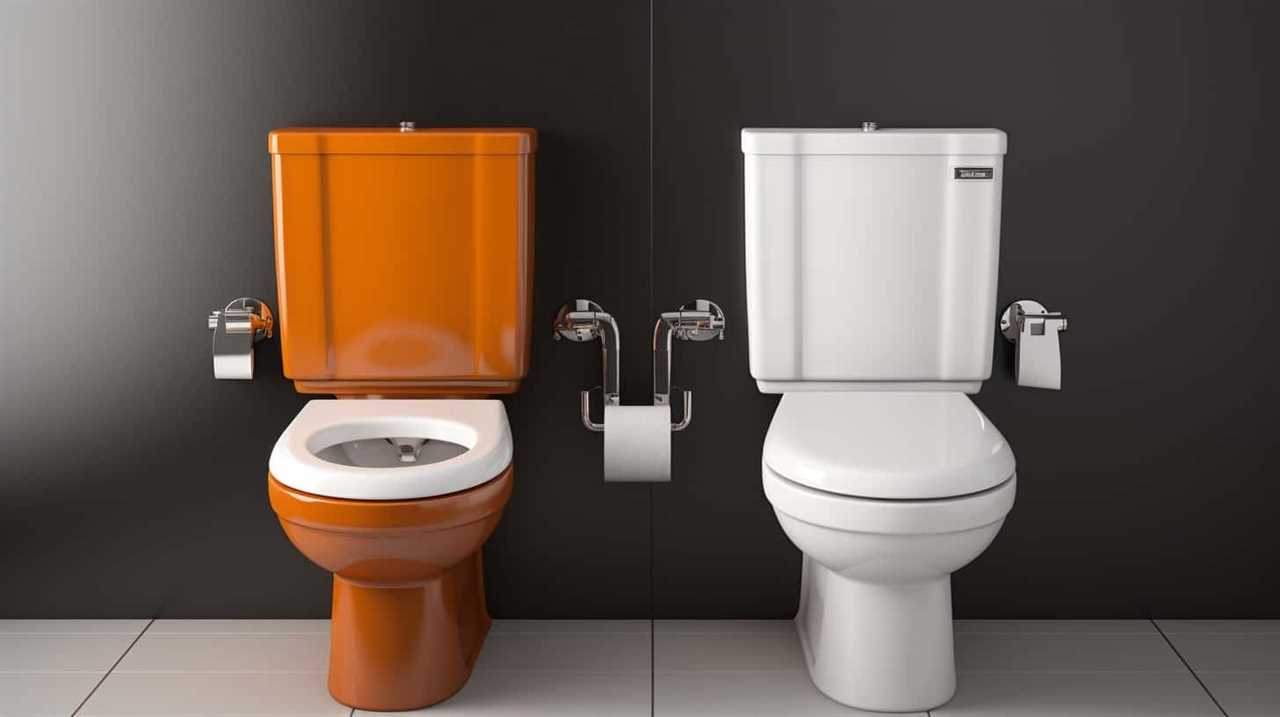
| Benefits |
|---|
| Convenience |
| Hygiene |
| Environmental Impact |
Proper Disposal of Other Bathroom Waste
To ensure proper sanitation and waste management, we must address the appropriate disposal of other bathroom waste in Puerto Del Carmen.
While we’ve discussed the flushing of toilet paper, there are other items that shouldn’t be flushed down the toilet. Proper disposal methods are crucial to prevent clogs and protect the environment.
Items such as baby wipes, sanitary napkins, and cotton swabs should be placed in a waste bin instead of being flushed. These items don’t break down easily and can cause blockages in the sewage system. When flushed, they can also end up in rivers and oceans, contributing to pollution and harming marine life.
Tips for a Smooth Flushing Experience
To ensure a smooth flushing experience and prevent any potential clogs, we can follow a few simple tips:

- Use the right amount of toilet paper: One or two squares should be enough for most tasks. Avoid excessive use to prevent clogging.
- Consider toilet paper alternatives: If you’re looking for eco-friendly bathroom options, consider using bidets or wet wipes specifically designed to be flushed.
- Flush properly: After using the toilet, make sure to hold down the flush lever until all the waste and toilet paper have been completely flushed away. This will help prevent any lingering debris from causing a clog.
- Regular maintenance: Keep your toilet in good condition by performing regular maintenance, such as checking for leaks, cleaning the flush holes, and using a plunger if necessary.
Considerations for Travelers With Sensitive Plumbing Systems
When traveling to Puerto Del Carmen, it’s important for us to consider the sensitivity of our plumbing systems. This is especially true for those of us who are traveling with septic systems or have eco-friendly alternatives in mind.
Septic systems are designed to treat and dispose of wastewater, but they can be easily overwhelmed by excessive toilet paper usage or other non-biodegradable materials.
To prevent any plumbing issues during our trip, it’s advisable to use eco-friendly alternatives such as bidets or wet wipes that are specifically designed to be flushed down the toilet. These alternatives aren’t only gentle on our plumbing systems but also help us reduce our environmental impact.
Frequently Asked Questions
Can I Flush Baby Wipes or Other Non-Flushable Products Down the Toilet in Puerto Del Carmen?
Yes, we can flush toilet paper in Puerto Del Carmen. However, it is important to note that non-flushable products, such as baby wipes, should not be flushed. There are alternative toilet paper options available.

Are Bidets Commonly Found in Bathrooms in Puerto Del Carmen?
Bidets aren’t commonly found in bathrooms in Puerto Del Carmen. Instead, many people use alternative methods for disposing of toilet paper, such as placing it in a bin. This practice helps prevent plumbing issues.
Is It Safe to Drink Tap Water in Puerto Del Carmen?
Yes, it is safe to drink tap water in Puerto Del Carmen. The tap water quality is excellent. However, if you prefer alternatives, bottled water is widely available and many restaurants offer filtered water.
How Often Are the Sewage Systems in Puerto Del Carmen Maintained and Cleaned?
Yes, we maintain and clean the sewage systems in Puerto Del Carmen regularly. Our team ensures the frequency of sewage system maintenance is sufficient to keep them functioning properly. Our cleaning procedures are thorough and effective.
Are There Any Specific Rules or Regulations Regarding Toilet Paper Disposal in Puerto Del Carmen?
Yes, there are specific regulations in Puerto Del Carmen regarding toilet paper disposal. It is important to follow these rules to avoid clogging the sewage system and causing environmental damage by flushing non-flushable products.

Conclusion
So, can you flush toilet paper in Puerto Del Carmen?
The answer is yes! With its modern plumbing infrastructure, you can enjoy the convenience of flushing toilet paper without any worries.
Just remember to dispose of other bathroom waste properly to keep the system running smoothly.
Whether you’re a traveler or a local, these tips will ensure a hassle-free flushing experience.
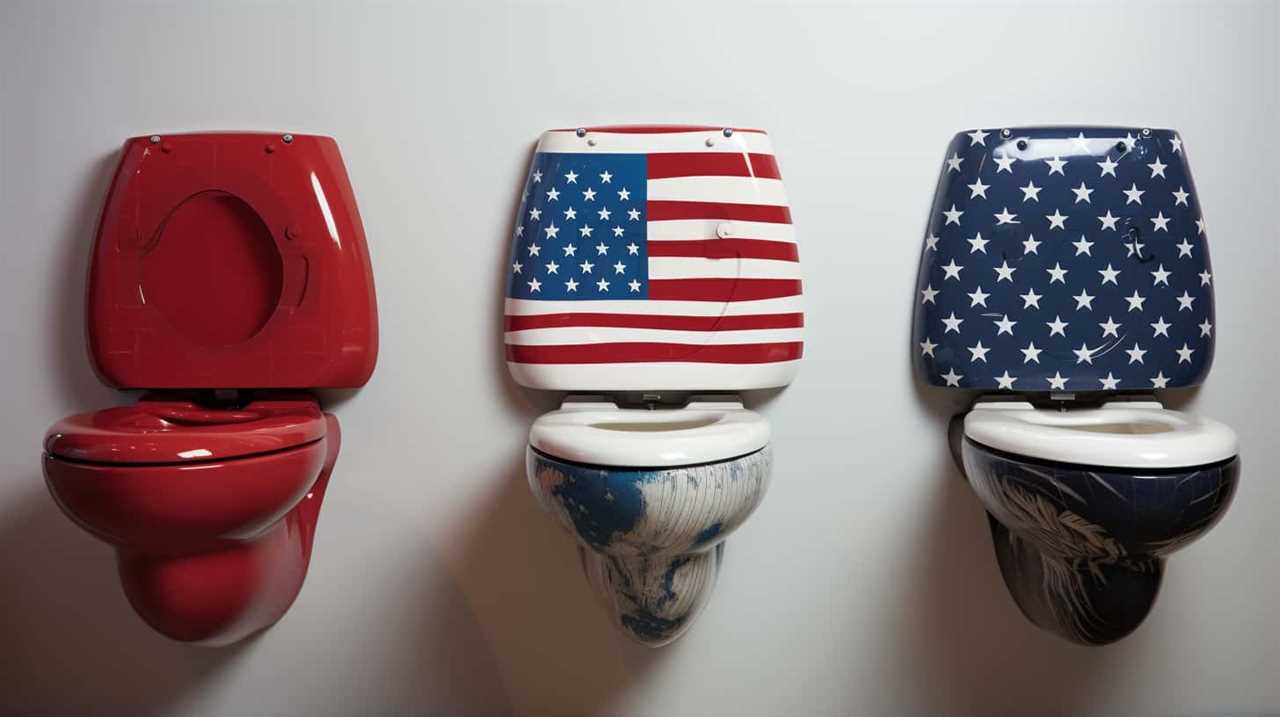
So go ahead, relax, and let the toilet paper disappear with a satisfying whoosh, leaving you with a clean and refreshed feeling.
With an impeccable eye for detail and a passion for bathroom-related, Ava leads our editorial team gracefully and precisely.
Under her guidance, Best Modern Toilet has flourished as the go-to resource for modern bathroom enthusiasts. In her free time, you might find Ava exploring antique shops and looking for vintage bathroom fixtures to add to her collection.
Bathtub
What to Do if You Flush a Large Object Down the Toilet

Have you ever been in a situation where a large object gets flushed down the toilet? It can be a troublesome predicament that needs immediate attention.
Well, fear not! In this article, we will guide you through the steps you need to take to handle this plumbing crisis with ease. From assessing the situation to seeking professional help if needed, we’ve got you covered.
So, let’s dive in and master the art of toilet rescue!
Key Takeaways
- Assess the situation by examining the toilet bowl, checking for signs of leakage, and inspecting the surrounding area for water damage.
- Stop the water flow by locating and turning off the shut-off valve near the base of the toilet to prevent further water from entering the bowl.
- If possible, retrieve the object using a toilet auger or a long-handled tool with a hook, being careful not to push it further into the drain.
- If unable to retrieve the object, consider using a plumbing snake to break up the clog or hook onto the object. If the situation becomes complex, seek professional help from a plumber specializing in toilet repairs and blockage removal.
Assess the Situation
First, we need to assess the situation and determine the severity of the problem after flushing a large object down the toilet. Assessing the damage is crucial in order to take immediate action.

Start by examining the toilet bowl to see if it’s filled with water or overflowing. Take note of any signs of leakage or unusual sounds coming from the pipes. Carefully inspect the surrounding area for any water damage or wet spots on the floor. This will help you understand the extent of the problem and guide your next steps.
Once you have assessed the situation, you can move on to stop the water flow and prevent further damage.
Stop the Water Flow
To stop the water flow after flushing a large object down the toilet, we can use a shut-off valve located near the base of the toilet. This valve is typically a small, round knob that can be turned clockwise to shut off the water supply to the toilet.
By doing this, you can prevent any further water from entering the toilet bowl and potentially causing more damage or flooding. It’s important to act quickly in order to minimize the risk of overflowing and water damage to your bathroom.

Once the water flow has been stopped, you can then proceed to assess the situation and determine the best course of action to remove the object and prevent future plumbing mishaps.
Remember to always exercise caution when dealing with plumbing issues and consider seeking professional help if needed.
Retrieve the Object (If Possible)
After stopping the water flow, we can now focus on retrieving the object from the toilet. It’s important to approach this task with caution to avoid causing further damage to the toilet.
First, put on a pair of rubber gloves to protect your hands.

Use a toilet auger or a long-handled tool with a hook at the end to carefully reach into the toilet bowl and try to grasp the object. Gently maneuver the tool around the object, being mindful not to push it further into the plumbing system.
If the object is within reach, carefully lift it out of the toilet. If you encounter any resistance or are unable to retrieve the object, it’s best to stop and call a professional plumber to avoid causing further toilet damage.
Transitioning to the next section, if retrieving the object manually isn’t possible, you can try using a plumbing snake.
Use a Plumbing Snake
Now, let’s move on to using a plumbing snake to retrieve the object from the toilet. A plumbing snake is a handy tool that can be used to unclog toilets and pipes. It consists of a long, flexible metal cable with a coiled end. Here’s how you can use a plumbing snake to tackle the clog and retrieve the flushed object:
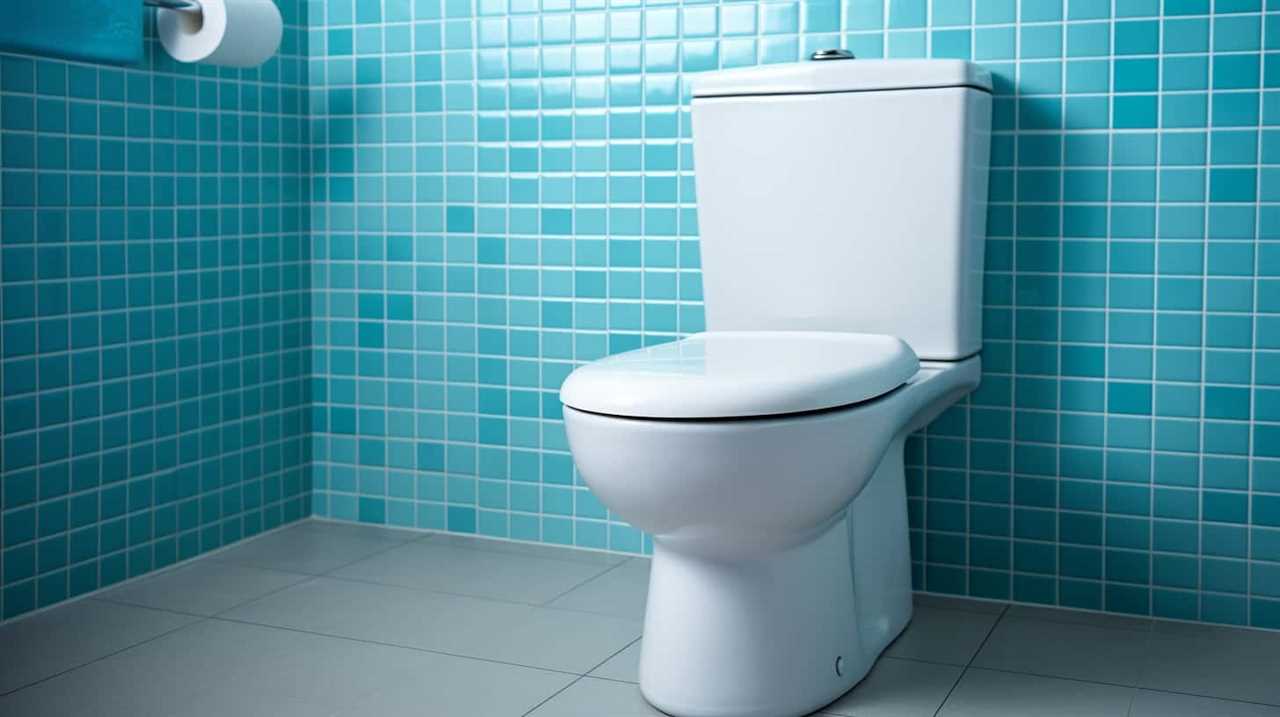
| Step | Instructions |
|---|---|
| 1 | Put on gloves and protective eyewear. |
| 2 | Insert the coiled end of the plumbing snake into the toilet bowl. |
| 3 | Slowly rotate the handle of the snake clockwise to feed it into the drain. |
| 4 | Continue pushing the snake further into the drain until you feel resistance. |
| 5 | Rotate the handle counterclockwise to break up the clog or hook onto the object. |
| 6 | Gently pull the snake back out, taking care not to damage the toilet bowl. |
| 7 | Dispose of the flushed object properly and flush the toilet to ensure it is unclogged. |
Using a plumbing snake is an effective DIY plumbing method to retrieve objects and unclog toilets. Remember to follow these steps carefully to avoid causing further damage.
Seek Professional Help if Necessary
If the object can’t be retrieved using a plumbing snake, we may need to seek professional help. In such cases, it’s advisable to contact a plumber who specializes in toilet repairs and blockage removal. Professional plumbers have the necessary tools, expertise, and experience to handle more complex situations. They can utilize advanced techniques like hydro jetting or drain cameras to locate and remove the object safely.
Seeking professional help ensures that the issue is resolved efficiently and effectively, minimizing any further damage to the plumbing system. Additionally, it’s important to learn from the experience and take steps to prevent future accidents. This includes being mindful of what gets flushed down the toilet and considering the use of drain screens or toilet locks to avoid similar situations in the future.
Frequently Asked Questions
Can I Use a Plunger to Try and Retrieve the Object?
Yes, we can try using a plunger to retrieve the object, but if it doesn’t work, we should consider calling a professional plumber or exploring alternative methods to safely remove the object.
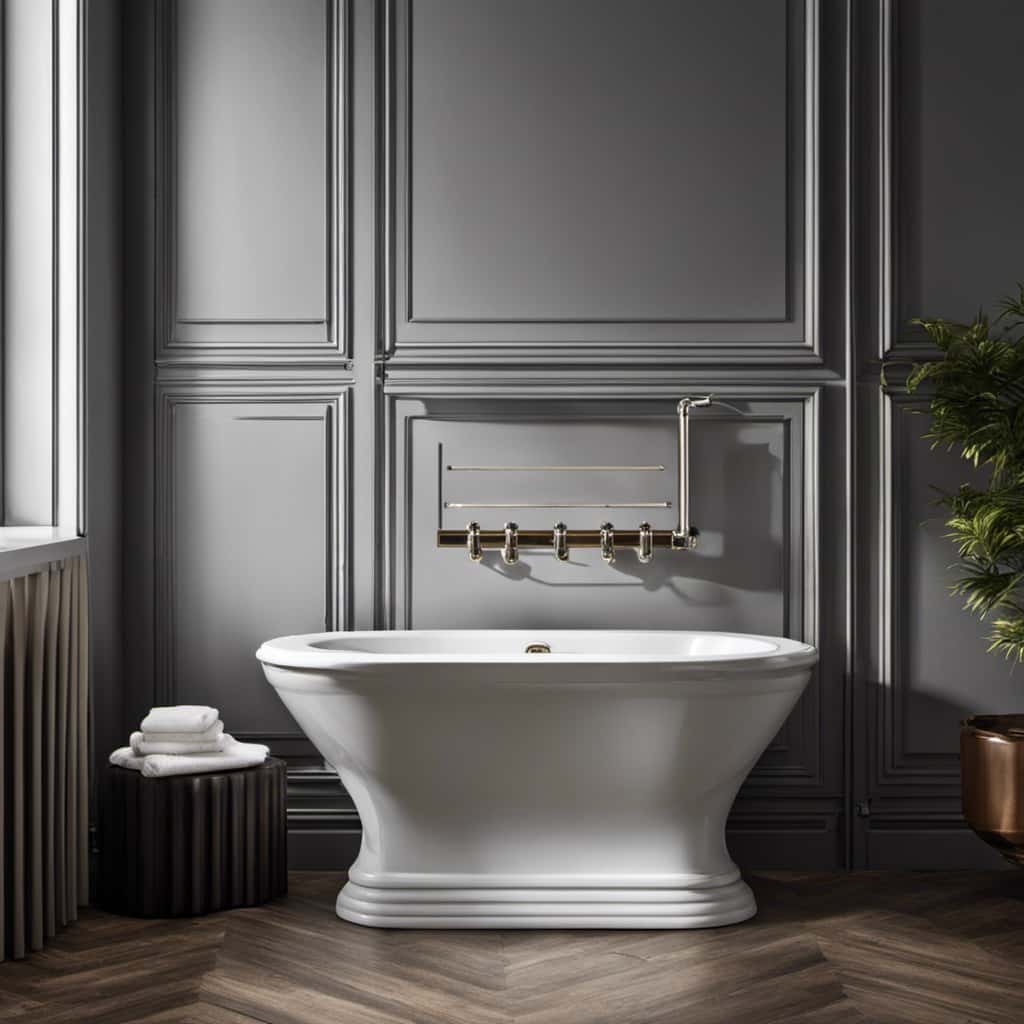
What Are Some Signs That the Object May Have Caused a Blockage in the Plumbing System?
If you notice slow draining, gurgling sounds, or water backing up in other fixtures, these are signs that a large object may have caused a blockage in the plumbing system. To prevent this, be mindful of what you flush and consider using a toilet lock.
Can I Use Chemical Drain Cleaners to Dissolve the Object?
We don’t recommend using chemical drain cleaners to dissolve the object. There are alternative methods, such as using a plunger or a plumbing snake, that are more effective and won’t cause further damage. If these methods don’t work, it’s best to seek professional assistance.
Are There Any Potential Dangers or Risks Associated With Using a Plumbing Snake?
When using a plumbing snake, there are potential risks if not used properly. It is important to follow the proper usage instructions to avoid damaging the pipes or causing further clogs.
Will My Homeowner’s Insurance Cover the Cost of a Professional Plumber if Needed?
Yes, homeowner’s insurance may cover the cost of a professional plumber if needed. However, it’s important to consider DIY methods first to avoid potential risks and dangers.

Conclusion
In conclusion, if you find yourself in the unfortunate situation of flushing a large object down the toilet, it’s important to assess the situation calmly and act quickly.
Stop the water flow, try to retrieve the object if possible, and use a plumbing snake if needed. Remember, seeking professional help may be necessary to resolve the issue completely.
Don’t let this mishap send you down the drain like a ship without a captain – take control and tackle the problem head-on.
With an impeccable eye for detail and a passion for bathroom-related, Ava leads our editorial team gracefully and precisely.
Under her guidance, Best Modern Toilet has flourished as the go-to resource for modern bathroom enthusiasts. In her free time, you might find Ava exploring antique shops and looking for vintage bathroom fixtures to add to her collection.
-

 Reviews2 months ago
Reviews2 months agoBest Toilet Air Freshener: Top 10 Picks for a Fresh-Smelling Bathroom [2024]
-

 FAQ - Advanced Bathroom Queries3 months ago
FAQ - Advanced Bathroom Queries3 months agoWhat Size Pipe for Toilet Drain
-

 FAQ - Advanced Bathroom Queries3 months ago
FAQ - Advanced Bathroom Queries3 months agoGuide: How to Use Drano Max Gel in Your Toilet
-

 FAQ - Advanced Bathroom Queries1 month ago
FAQ - Advanced Bathroom Queries1 month agoWhich Countries Use Bidets the Most
-

 FAQ - Advanced Bathroom Queries3 months ago
FAQ - Advanced Bathroom Queries3 months agoWhy Does My Poop Leave Streaks in the Toilet
-

 Reviews2 months ago
Reviews2 months agoBest Waterless Toilets: Top Options for Eco-Friendly Bathrooms [2024]
-

 Buying Guides2 months ago
Buying Guides2 months agoWhat to Do When You Accidentally Flushed Something Down the Toilet
-

 FAQ - Advanced Bathroom Queries3 months ago
FAQ - Advanced Bathroom Queries3 months agoHow Do Toilets Work in Bali






















